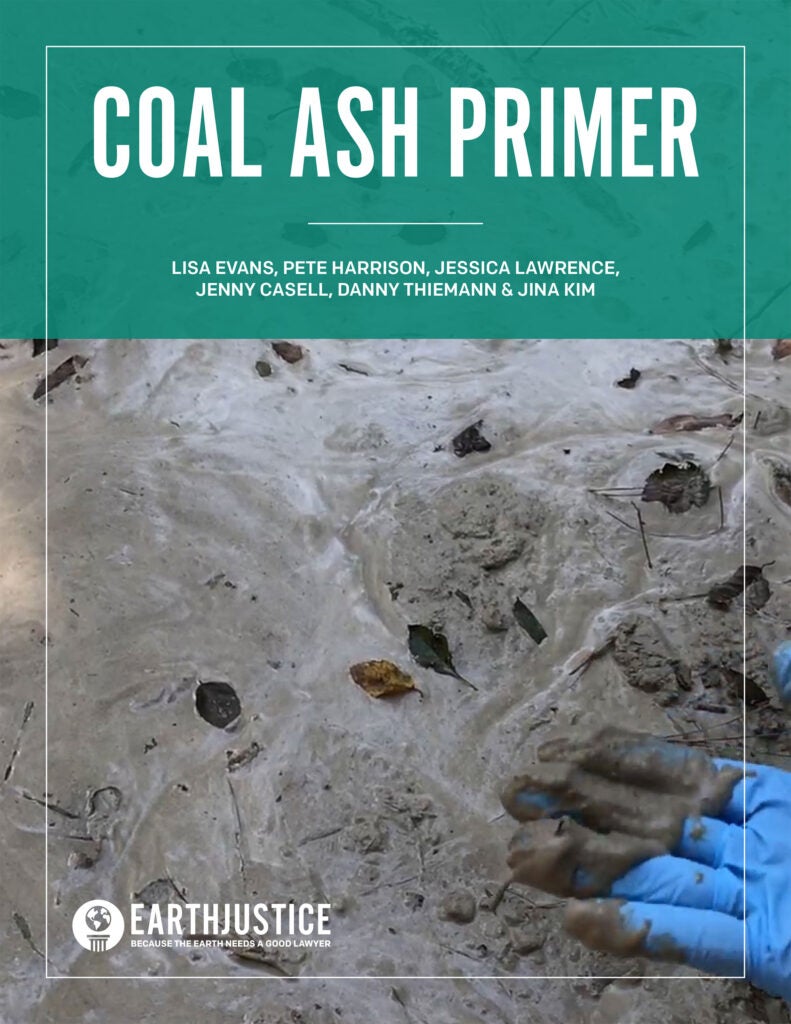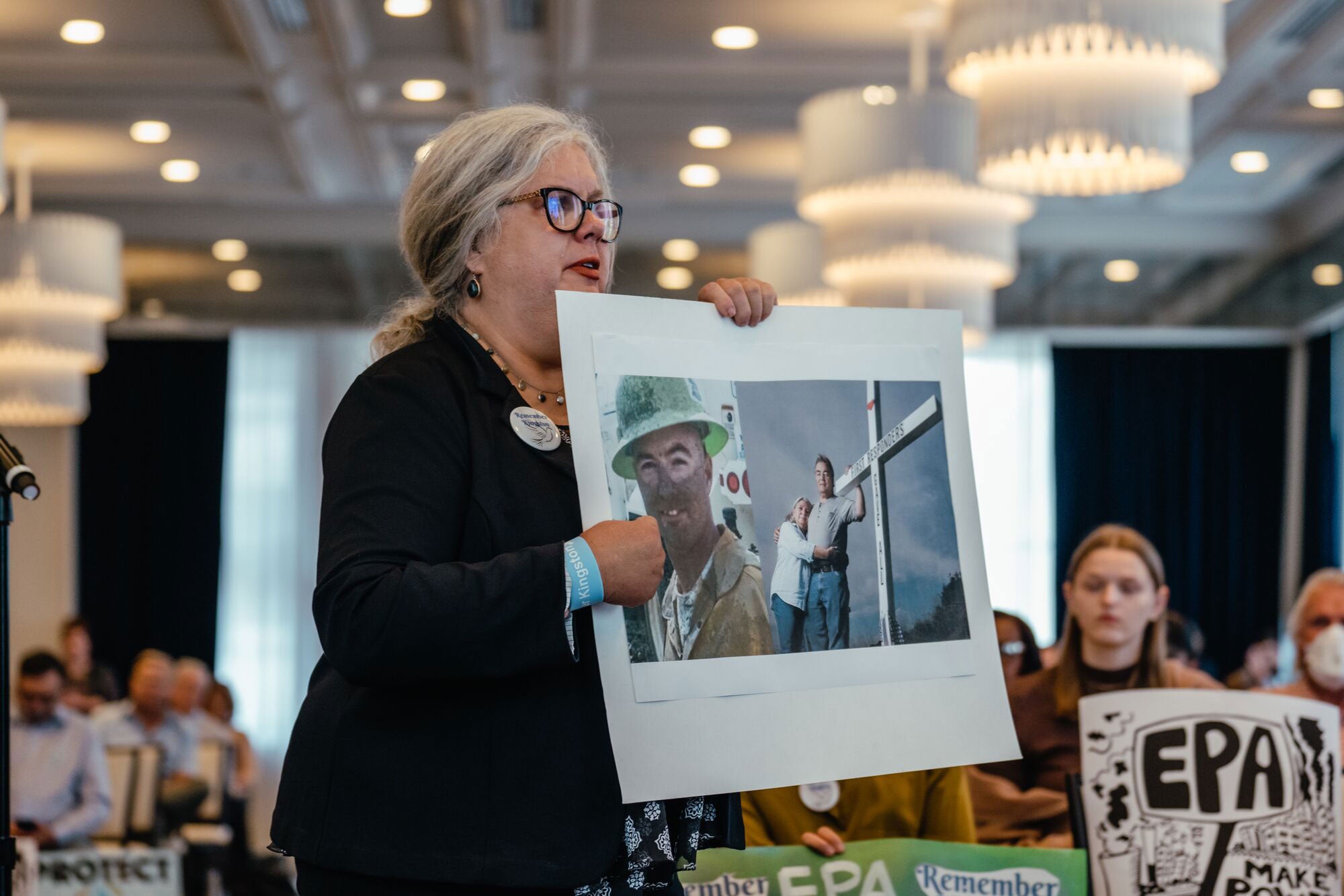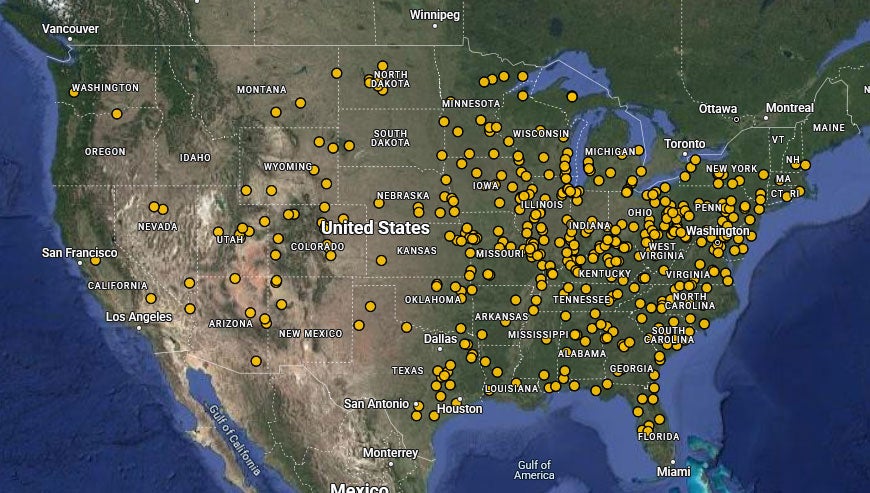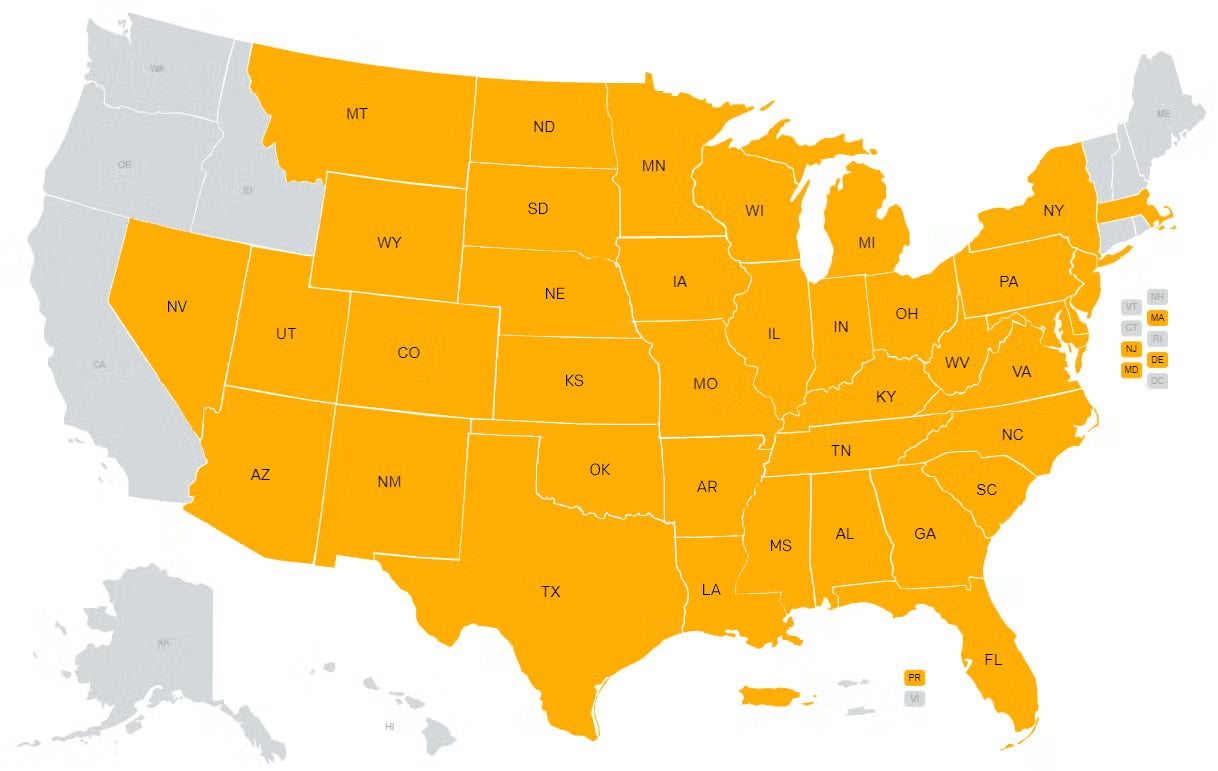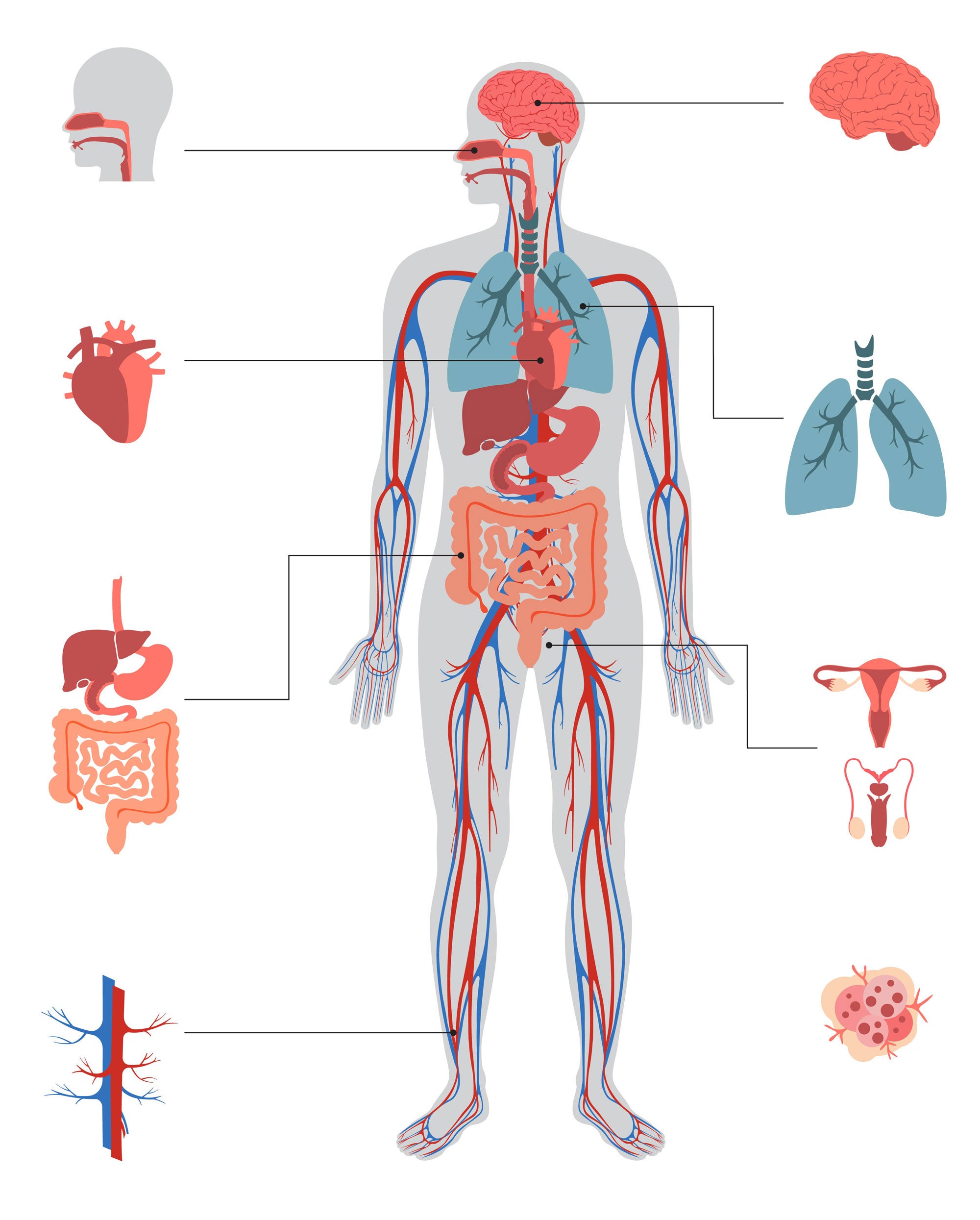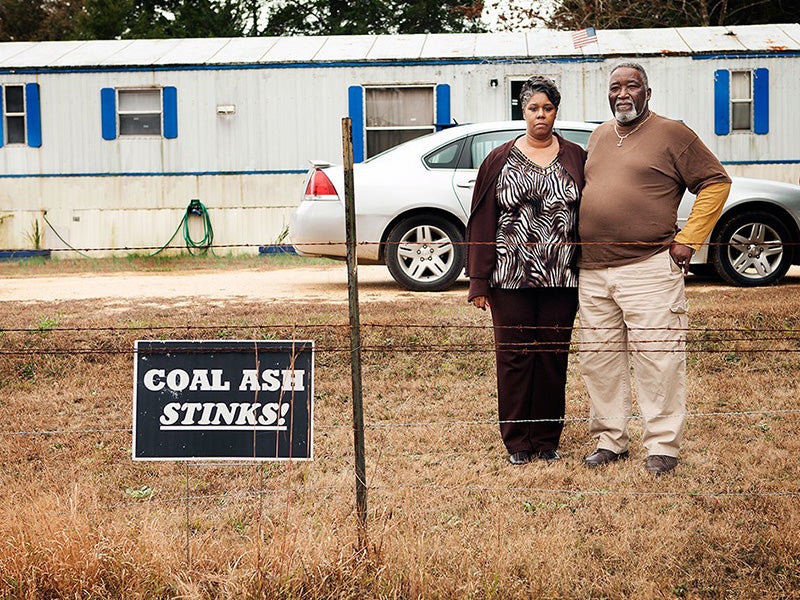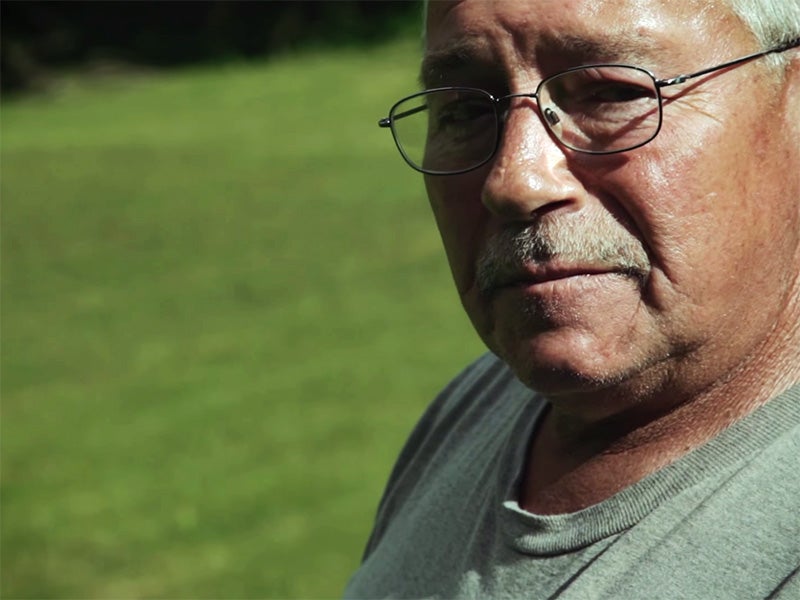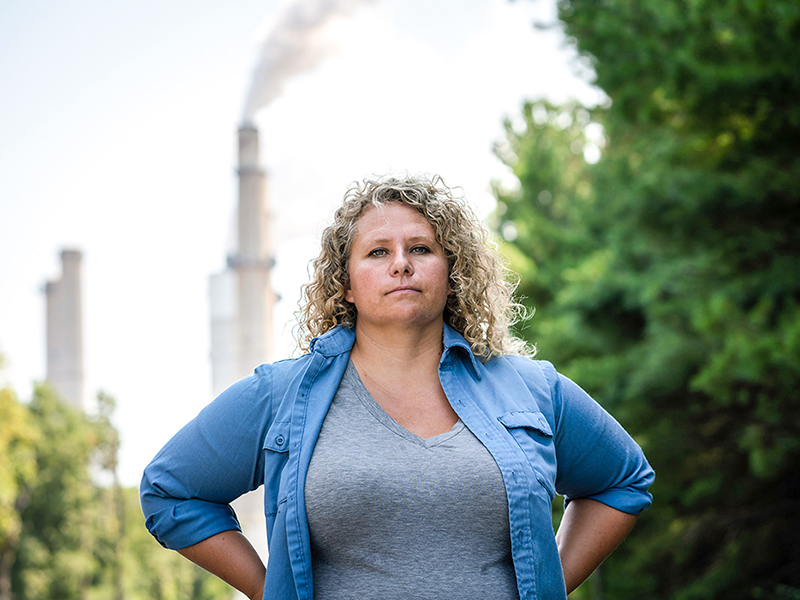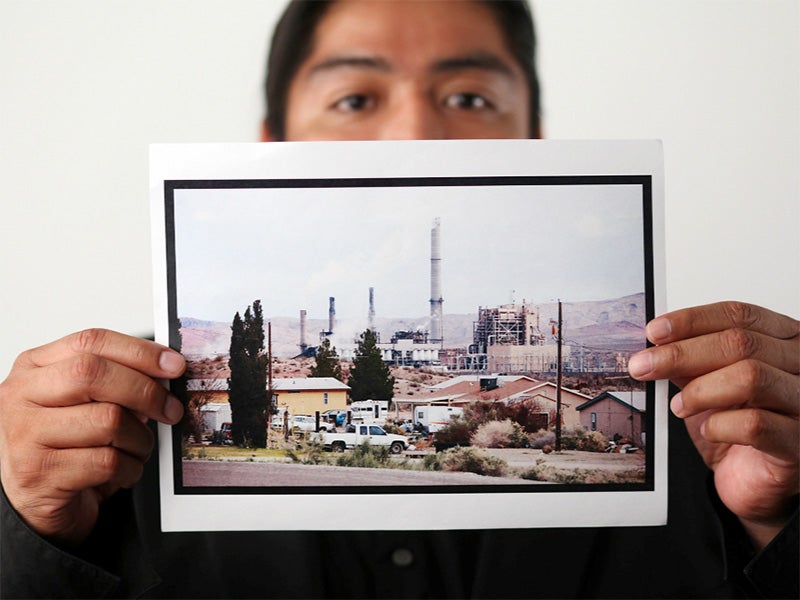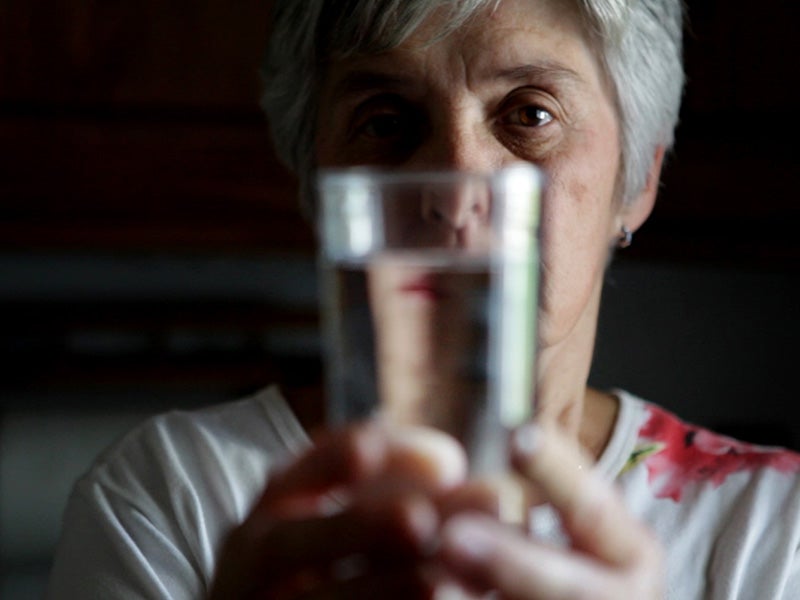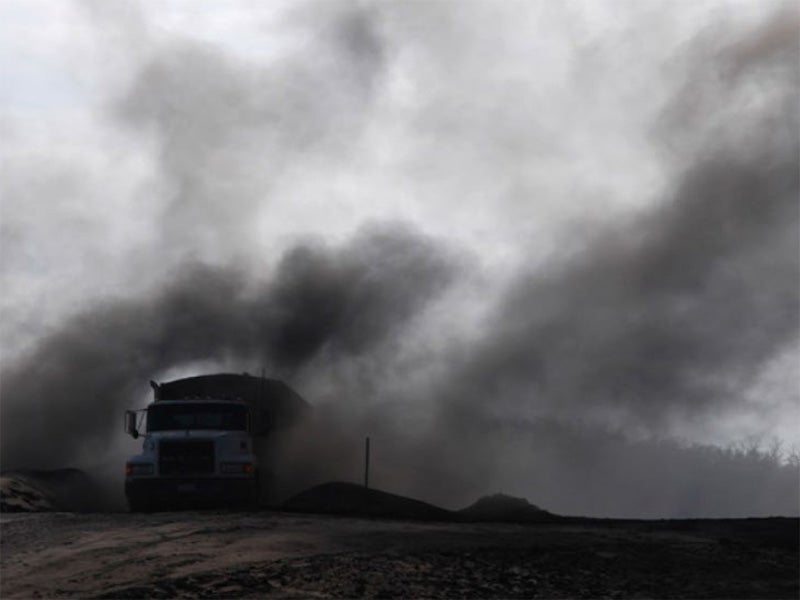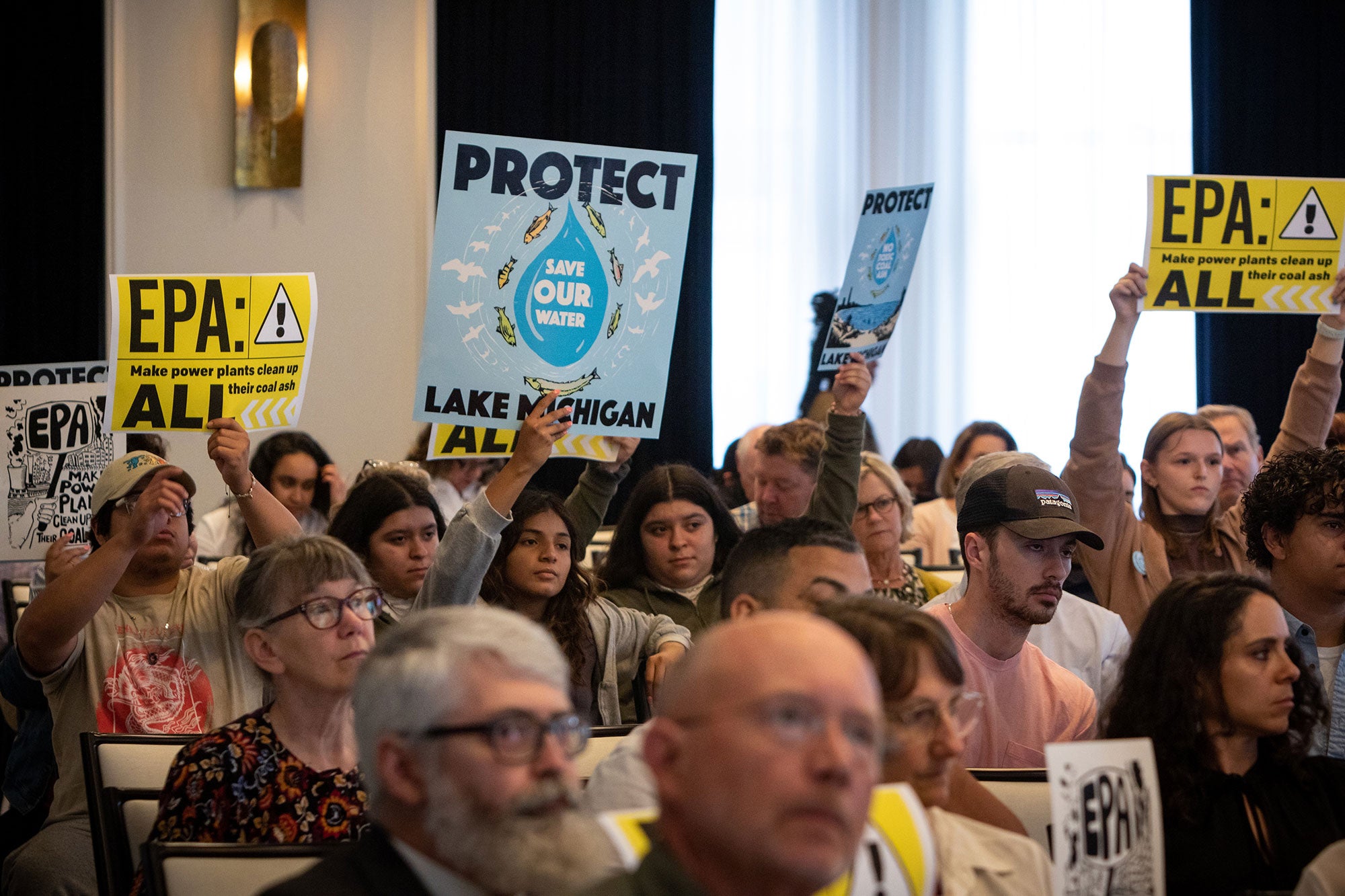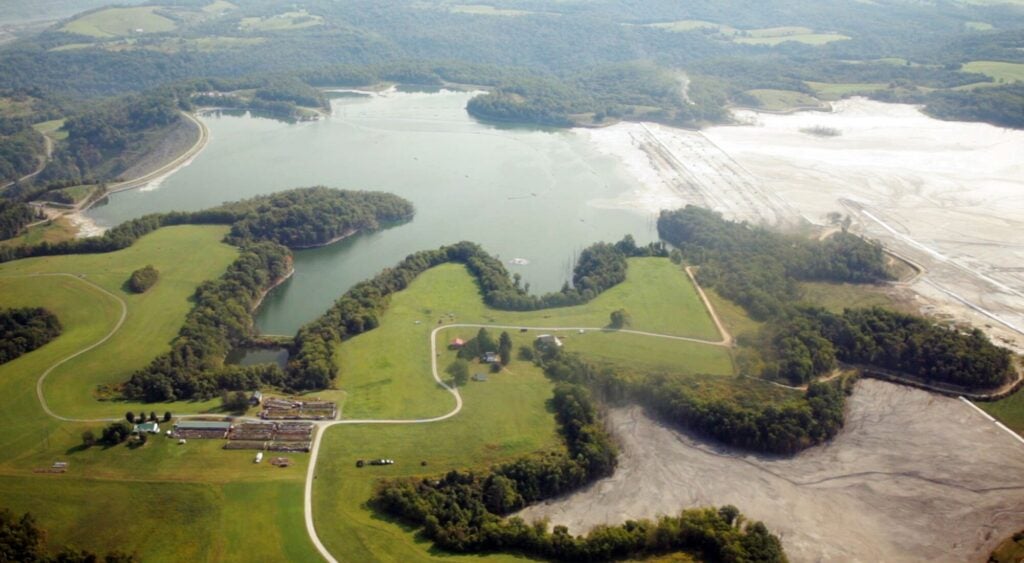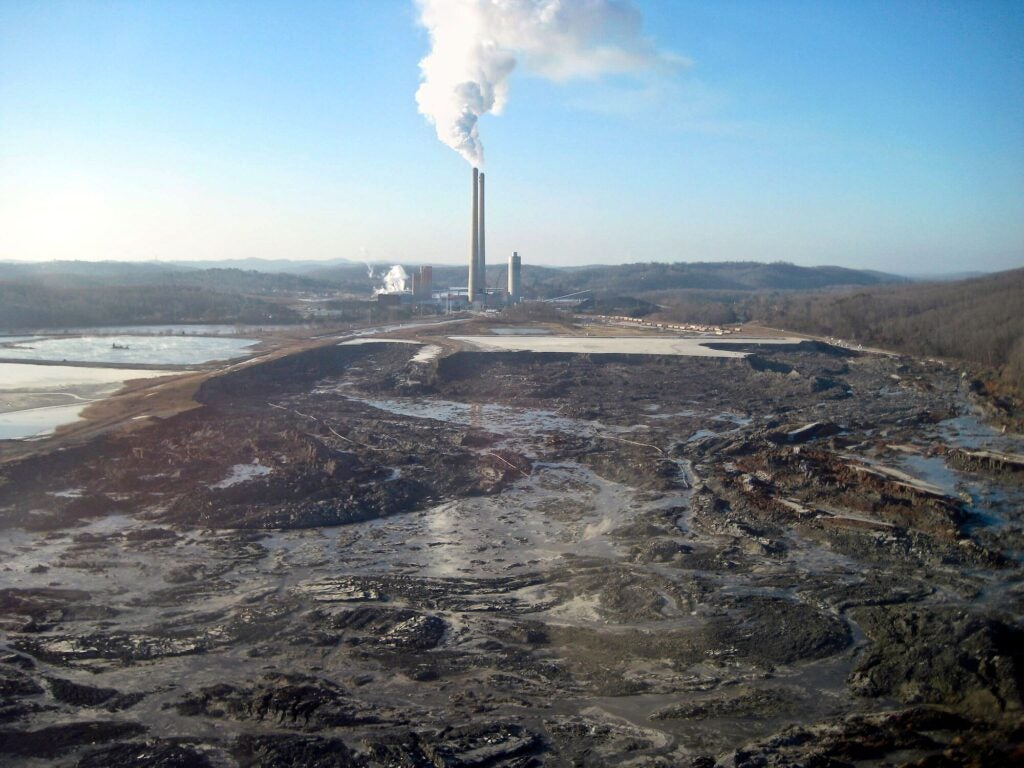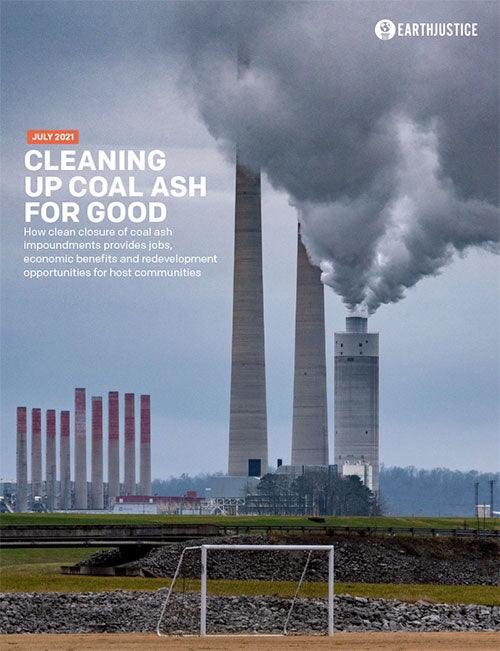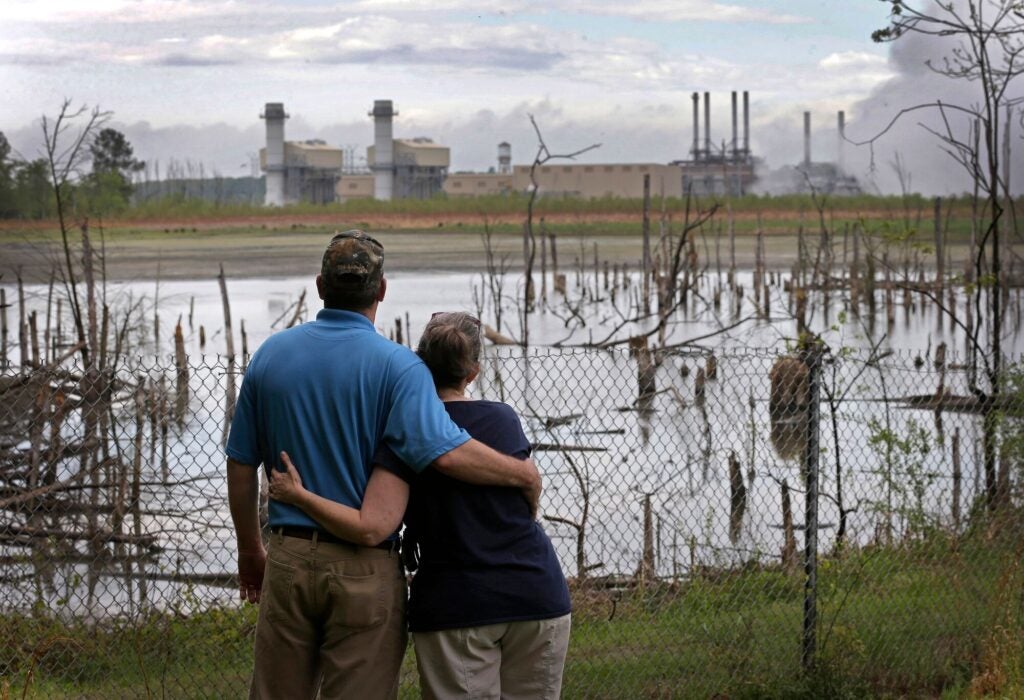Because the earth needs a good lawyer
220 Lawyers 15 Offices 660 CasesCoal Ash Contaminates Our Lives
Waukegan Generating Station on Lake Michigan. (Jamie Kelter Davis for Earthjustice)
What is coal ash?
Coal ash is what is left behind when power plants burn coal for energy; it is a toxic mix of carcinogens, neurotoxins, and other hazardous pollutants.
Explainer
The Coal Ash Primer
An introduction to the serious threats to human health and the environment, particularly to water resources and clean air, posed by coal ash.
Video
An Ill Wind
The complete 4-part series on the Moapa River Indian Reservation and their fight against the devastating effects of coal ash pollution.
Stories From the Frontlines
‘Do Your Job, EPA’
By law, before government regulations are adopted or changed, agencies must ask the public — you — to weigh in. Here's what the EPA heard.
Recommendations
Cleaning Up Coal Ash For Good
How clean closure of coal ash impoundments provides jobs, economic benefits, and redevelopment opportunities for host communities.
Lisa Evans
Senior Counsel, Earthjustice
Coal Ash Contaminates Our Water
For decades, utilities disposed of coal ash by dumping it in unlined ponds, landfills and mines where the toxic pollution leaks into groundwater. Industry’s own data indicate that across the country, 91% of coal plants are currently contaminating groundwater above federal safe drinking water standards.
Map
Mapping the Coal Ash Contamination
746 coal ash units in 43 states and Puerto Rico have reported information in compliance with EPA’s 2015 Coal Ash Rule. Here’s what the data said.
Fact Sheets
Coal Ash in the United States
Learn about coal ash landfills and surface impoundments (ponds) in 39 states and Puerto Rico.
Map
101 Coal Plants With Toxic Sludge Threatening Our Drinking Water
New analysis reveals more than 100 power plants dumped coal ash into ponds that are dangerously close to or totally submerged in drinking water sources.
Case Study
The 10 Most Contaminated Sites
Ruth Santiago
Comité Diálogo Ambiental, Puerto Rico
Coal Ash Contaminates Our Health
Coal ash contains hazardous pollutants including arsenic, chromium, lead, lithium, mercury, radium, selenium, and other heavy metals, which have been linked to cancer, heart and thyroid disease, reproductive failure, and neurological harm.
Report
Ash in Lungs: Breathing Coal Ash is Hazardous to Your Health
Meet six communities poisoned by toxic coal ash.
Case Study
Is Drinking Water Safe Near Contaminated Coal Ash Sites?
The most widespread known drinking water contamination occurred in Town of Pines, Ind., from a leaking landfill and coal ash used as “fill” throughout the town.
Case Study
Damage to Aquatic Life from Coal Ash Disposal
The release of bioaccumulative toxic pollutants from coal ash has caused fish kills, deformities in fish and amphibians, and health hazards to people consuming contaminated fish.
Todd Waterman
Statewide Organizing for Community eMpowerment, Tennessee
Fighting Against Coal Ash
Coal ash remains one of our nation’s largest toxic industrial waste streams, U.S. coal plants continue to produce approximately 70 million tons of coal ash every year.
Stories
Together, We Will Achieve Strong, Enforceable Protections for Our Water and Our Future.
Meet communities fighting back against toxic coal ash.
Alivia Hopkins of Illinois
Speaking at a 2018 EPA hearing on coal ash
The EPA Coal Ash Rule
In 2015, the EPA adopted its first-ever safeguards to protect people from toxic coal ash to settle a lawsuit brought by Earthjustice and our clients. But the Coal Combustion Residuals (CCR) Rule left half of coal ash unregulated.
After years of litigation and grassroots activism, in 2024, the EPA addressed gaps in the 2015 Coal Ash Rule, extending federal monitoring and cleanup requirements to hundreds of previously excluded older coal ash landfills and ponds that have been leaking toxic pollution into groundwater.
Map
Where are Coal Ash Dump Sites?
Coal ash remains one of our nation’s largest toxic industrial waste streams. U.S. coal plants continue to produce approximately 75 million tons every year.
Report
Poisonous Coverup: Industry is Flouting the Coal Ash Rule
Nearly a decade after EPA established the first-ever protective requirements for coal ash disposal, progress to clean up contaminated groundwater and safely close dangerous coal ash ponds is dismal.
Cleaning Up Coal Ash For Good
As an increasing number of aging power plants across the United States cease operations, the companies that profited from burning coal for decades must not be allowed to walk away from dealing with the hundreds of coal ash dumps leaking toxic waste into groundwater.
Enforcement and strengthening of the coal ash rule will ensure that these toxic dumps do not present long-term threats or cause irreparable harm.
Report
Cleaning Up Coal Ash: Resources and Recommendations
Hundreds of coal ash ponds must be closed over the next several years, and many plant owners are proposing inadequate and sometimes illegal and dangerous closures.
From the Experts
Making the Law More Than Words on a Page
Environmental enforcement is environmental protection.
Victory
EPA Moves to Reject Six Coal Plants’ Applications to Keep Toxic Coal Ash Dumps Open
EPA found that the six plants failed to prove that their coal ash ponds were not leaking and not contaminating groundwater
Article
Court Victories Signal Hope for Communities Threatened by Coal Ash
Win after win in the courts and on the ground show the ‘possibility for change’ when community members’ voices are heard.
Article
What a Real Coal Ash Cleanup Looks Like
North Carolina has ordered Duke Energy to excavate and close all its coal ash ponds.
Article
Illinois Coal Ash Rule Will Clean Up Coal’s Dirty Legacy
Why a bill becoming a law is just the beginning, as explained through the case of Illinois’ landmark coal ash law.
Additional Resources
Lisa Evans
Senior Counsel, Earthjustice
Earthjustice fights in the courts for a long-term solution to the toxic menace of coal ash. And we act on behalf of dozens of clients and over 100 coalition partners to defeat legislative attempts to subvert federally enforceable safeguards of coal ash.
Earthjustice’s Clean Energy Program uses the power of the law and the strength of partnership to accelerate the transition to 100% clean energy.
